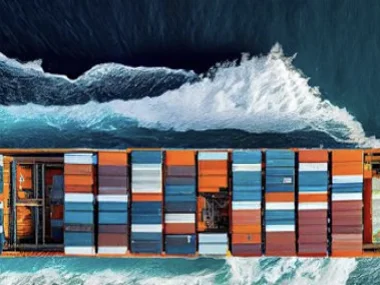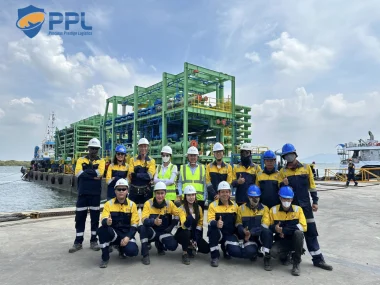Logistics businesses need to move towards providing 3PL services.
The global logistics industry is moving towards a 3PL model that provides transportation, warehousing, and additional value-added services such as inventory management, picking, packaging, and order tracking. However, most domestic enterprises currently only provide self-supplied logistics services (1PL), or provide second-party logistics services (2PL).
Enterprises have not yet taken advantage of the opportunity
Vietnam is one of the fastest growing countries in the world in terms of logistics services, expected to continue to grow in the coming years, thanks to the development of high-tech manufacturing and the increase in the number of middle class. Vietnam's logistics service industry includes domestic and foreign companies.
However, companies hardly do international shipping business, except for handling and transporting goods by road across the northern border with China (which accounts for only a small portion of goods entering and leaving Vietnam).
The biggest challenge for the industry is the quality and reliability of services. However, these issues can be solved by learning from the experience of other markets.
To analyze the investment opportunities in this field, we divide it into: high-capital-intensive segments, low-capital-intensive segments, concentrated segments and fragmented segments. Currently, the domestic logistics service industry consists mainly of micro to small companies, so it is very capital-intensive to operate in a highly fragmented segment.
For example, transport companies account for about 2/3 of the total number of enterprises in the industry, but more than 80% of road transport companies have a fleet size of less than 5 vehicles, and it is estimated that about 70% of delivery trucks return to the station empty.
Therefore, the commission paid by intermediaries to the service fee of about 30% is too high (in cold storage transportation - one of the most promising segments of the Vietnamese logistics industry, the majority of the market share belongs to foreign-invested companies with about 70%).
Opportunities are still ahead
In our view, the opportunities are very attractive for domestic companies, stemming from the fact that foreign customers are willing to pay high prices for reliable logistics services. Moreover, the demand of middle-class customers for products and services requiring high-quality logistics is increasing rapidly.
For example, online shopping with home delivery service, the demand for perishable food and medicine. Because companies in the logistics sector with sufficient scale and professional management will benefit from reduced costs over time, as infrastructure in Vietnam and other issues will improve.
We also expect attractive investment returns for logistics companies that benefit from the rise of high-tech manufacturing, as well as the growth of the middle class in Vietnam.
The growth of high-tech manufacturing has led to increased demand for high-value logistics services, such as bonded warehouses to consolidate relatively high-value goods (compared to garments and footwear), before those products are exported.
In addition, imported machinery for the production of consumer electronics is often of high value. Therefore, customs clearance and freight forwarding activities require higher processing techniques and precision, compared to textile and yarn equipment for garment production.
In addition, the logistics industry has grown by 14-16% in recent years, and the total cost of logistics services in Vietnam is more than 20% of GDP, among the highest in the world. For example, three-quarters of Vietnam’s freight volume passes through just six of the country’s 75 seaports.
This presents an attractive opportunity for private equity funds and other investors who can help local companies grow their revenues and profits by applying international best practices.
Moving towards 3PL services
Currently, high-quality logistics services are essential to handle high-value consumer electronics, but logistics costs account for just over 1% of the price of such items (compared to around 30% for agricultural products such as rice).
The high demand for service quality coupled with modest logistics costs as a percentage of total costs for consumer electronics manufacturers will allow logistics service companies to charge higher service fees if they can meet the needs of these demanding customers by providing 3PL logistics services.
We see three potential investment strategies:
1) Invest in leading logistics companies to develop into integrated platforms that can provide customers with cost advantages.
2) Identify specific assets that need capital to upgrade or can be repurposed and drive growth by increasing operational efficiency.
3) Mergers and acquisitions.
The adoption of international best practices - such as digitalization - along with capital injections are important to these strategies. Capital injections are necessary, where the investor's strategy is to increase the company's capacity by adding trucks to atrucking companies, or investing in additional cranes/heavy equipment for businesses operating in port warehouses.
An attractive branch of Vietnam’s logistics industry is customs clearance services, where a competent intermediary can expedite the clearance of goods in and out of the country, by ensuring compliance with the complex regulations required.
According to the Vietnam Logistics Business Association (VLBA), more than 800 freight forwarding companies in Vietnam provide customs clearance services. However, we believe that companies can incorporate customs clearance services as part of the “Core Transport Enterprise” criteria, capable of meeting the transportation/logistics needs of high-tech manufacturing companies to earn higher service fees.




